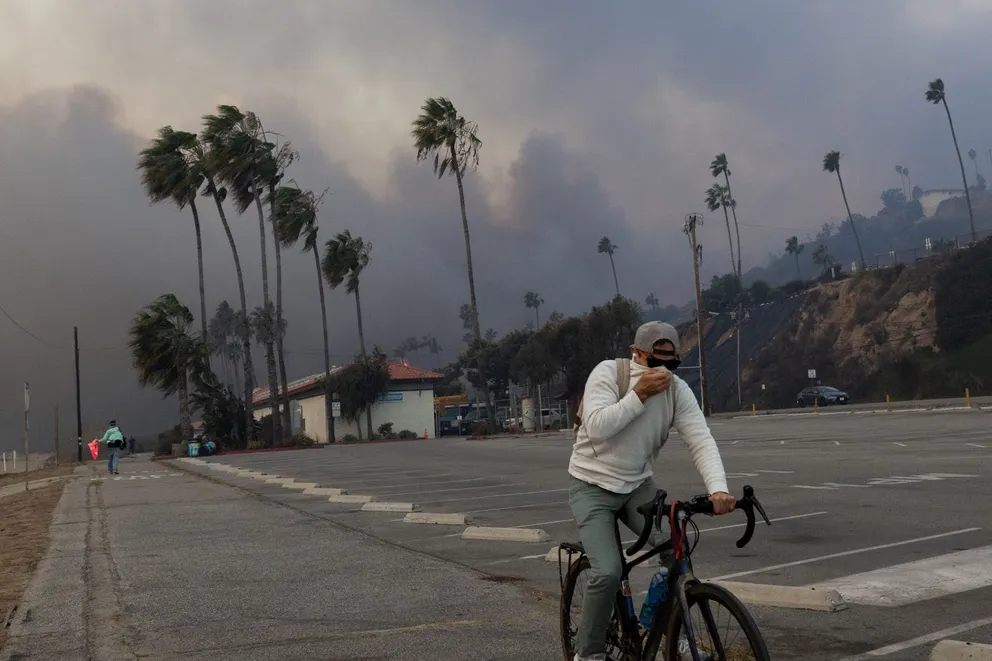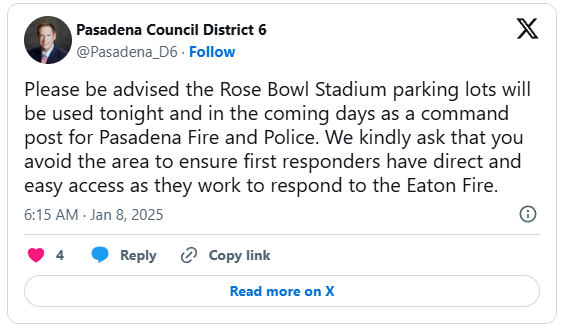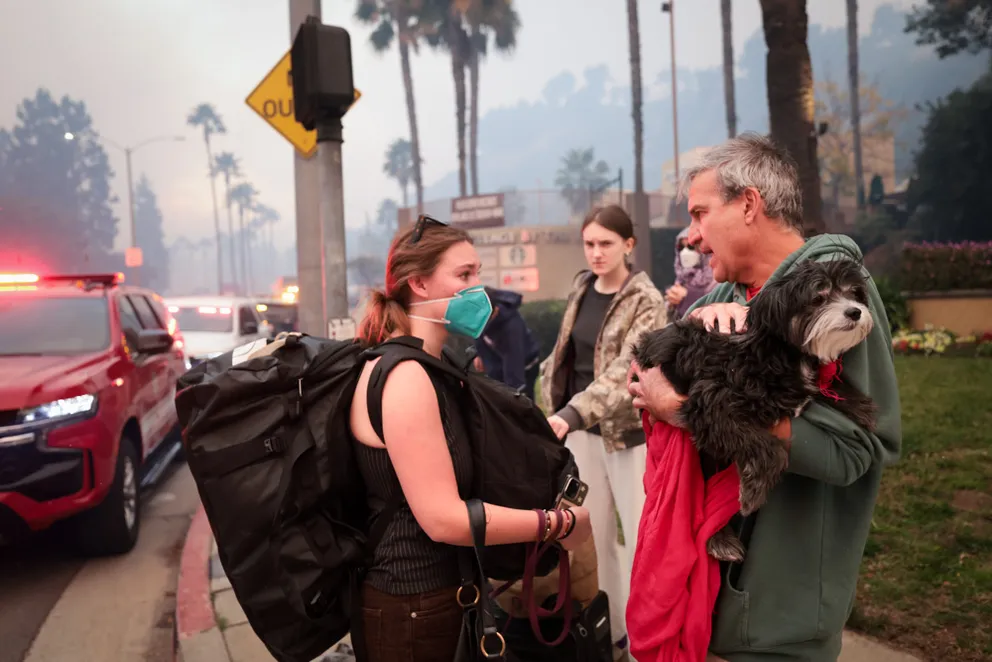The Palisades Fire in Los Angeles has forced thousands to flee, with elderly residents evacuating in just their nightclothes and socks. Tragically, as powerful winds grounded firefighting aircraft and the flames continued to rage uncontrollably, the battle against this devastating blaze appears far from over.
Igniting with intense ferocity, the Palisades Fire sent residents scrambling to safety, many without shoes or essential belongings, as relentless winds fanned the flames and heightened the chaos in evacuation areas.

What began as a contained blaze rapidly escalated into an uncontrollable inferno, compelling over 30,000 people to evacuate their homes. Authorities have cautioned the public, warning that the most severe challenges are “still ahead.”
The blaze erupted around 10:30 a.m. near Piedra Morada Drive and, by nightfall, had consumed nearly 3,000 acres. Propelled by relentless winds, it expanded at an astonishing rate, scorching the equivalent of more than one football field per minute and leaping across highways as residents rushed to flee.
The powerful winds, with gusts anticipated to reach up to 80 mph, forced the grounding of firefighting aircraft, severely hampering efforts to control the flames. Los Angeles Fire Department spokesperson Margaret Stewart announced that air operations were suspended by 8 p.m. due to hazardous weather conditions.
Firefighters were forced to combat the raging inferno from the ground, contending with extreme fire behavior and unpredictable flames. The situation evoked haunting memories of previous California wildfires, especially December’s Franklin Fire, which devastated the same area.
This time, evacuation efforts were further complicated by severe traffic congestion. Many residents, unable to navigate the gridlocked roads, abandoned their vehicles and fled to safety on foot.
Firefighters urged residents to park their vehicles along the roadside or leave their keys behind to enable emergency vehicles to navigate. However, many cars were abandoned in obstructive positions, forcing crews to use bulldozers to clear the streets for access.
The crisis extended beyond the Palisades, with neighboring Los Angeles County facing its own peril. The Eaton Fire, threatening Altadena and Pasadena, led to urgent evacuations, including a local elderly care facility.
Staff at The Terraces at Park Marino assisted living facility quickly mobilized to evacuate approximately 95 residents, many requiring wheelchairs or gurneys for transport.
Video footage revealed heartbreaking moments of elderly residents wrapped in shawls and thin gowns, some barefoot, as they sat in a 7-Eleven parking lot while fire officials coordinated efforts to find safer accommodations.
The gravity of the situation escalated as officials warned that this fire event was far from over. UCLA climate scientist Daniel Swain cautioned that the combination of strong winds and dry conditions created a recipe for disaster.
Governor Gavin Newsom echoed these concerns during an update. He stated that fire crews had been strategically positioned in areas of high fire risk, anticipating that the Palisades and Eaton fires might not be the only blazes firefighters would need to tackle.
“We are bracing for — and hoping against — the likelihood of additional fires,” Governor Newsom stated, highlighting California’s heightened wildfire risk during extreme weather conditions.
Local authorities and fire crews worked around the clock to minimize damage and protect residents. The city of Santa Monica collaborated closely with the Los Angeles Fire Department, providing mutual aid to bolster firefighting operations.
Santa Monica officials remained on high alert, monitoring developments as winds continued to pose a significant threat overnight. Pasadena’s Vice Mayor, Steve Madison, urged residents to avoid the Rose Bowl Stadium parking lots.

His office posted an update on social media, writing in part, “Please be advised the Rose Bowl Stadium parking lots will be used tonight and in the coming days as a command post for Pasadena Fire and Police.”

The Palisades Fire has already left a trail of destruction, and with conditions expected to deteriorate further, officials are concerned that even greater devastation may follow.
The National Weather Service has issued a “particularly dangerous situation” alert for Los Angeles and eastern Ventura counties, which is set to remain in place through Thursday.
The alert highlighted an extreme fire threat driven by the dangerous combination of strong winds and low humidity, creating ideal conditions for wildfire outbreaks.
Swain noted that while the peak winds were anticipated from Tuesday night into early Wednesday morning, the risk of wildfires would persist throughout the week due to the progressively drier vegetation.
Swain emphasized that the extended wind event would have a lasting impact on vegetation, amplifying the fire risk as the week advanced. “The vegetation will continue to dry out as the wind event persists,” he explained.
He projected that the driest conditions would likely occur toward the conclusion of the wind event, significantly heightening the potential for additional wildfires to ignite.
Swain noted, “While the event will start with some of the strongest winds, the vegetation will reach its driest state toward the end. This means there will be an extended period of elevated fire risk throughout the duration of the wind event.”
The dangers posed by the fires also extended to firefighters on the front lines. Crews faced a grueling battle, often unable to rely on air support.
Instead, they resorted to hand tools and hoses, trying to contain the rapidly advancing flames while navigating treacherous terrain.

His efforts, along with those of countless first responders, volunteers, and community members, underscored the importance of collective action during such a crisis.
As the Palisades and Eaton fires raged on, anxiety gripped residents throughout Southern California, aware that the most challenging moments might still lie ahead. “This situation is far from over; it’s just beginning and is likely to worsen significantly before any improvement,” Swain warned.

Leave a Reply